A Room Temperature ZnO-NPs/MEMS Ammonia Gas Sensor
Abstract
:1. Introduction
2. Materials and Methods
3. Results and Discussion
4. Conclusions
Author Contributions
Funding
Institutional Review Board Statement
Informed Consent Statement
Data Availability Statement
Acknowledgments
Conflicts of Interest
References
- Zhang, J.; Ouyang, J.; Ye, Y.; Li, Z.; Lin, Q.; Chen, T.; Zhang, Z.; Xiang, S. Mixed-Valence Cobalt(II/III) Metal−Organic Framework for Ammonia. ACS Appl. Mater. Interfaces 2018, 10, 27465–27471. [Google Scholar] [CrossRef] [PubMed]
- Hernandez, S.C.; Chaudhuri, D.; Chen, W.; Myung, N.V.; Mulchandani, A. Single Polypyrrole Nanowire Ammonia Gas Sensor. Electroanalysis 2007, 19, 2125–2130. [Google Scholar] [CrossRef]
- Hsueh, T.J.; Lu, C.L. A hybrid YSZ/SnO2/MEMS SO2 gas sensor. RSC Adv. 2019, 9, 27800–27806. [Google Scholar] [CrossRef] [PubMed]
- Kazanskiy, N.L.; Khonina, S.N.; Butt, M.A. Polarization-Insensitive Hybrid Plasmonic Waveguide Design for Evanescent Field Absorption Gas Sensor. Photonic Sens. 2021, 11, 279–290. [Google Scholar] [CrossRef]
- Tasaki, T.; Takase, S.; Shimizu, Y. Improvement of Sensing Performance of Impedancemetric C2H2 Sensor Using SmFeO3 Thin-Films Prepared by a Polymer Precursor Method. Sensors 2019, 19, 773. [Google Scholar] [CrossRef]
- Wu, J.; Wu, Z.; Ding, H.; Wei, Y.; Huang, W.; Yang, X.; Li, Z.; Qiu, L.; Wang, X. Three-Dimensional Graphene Hydrogel Decorated with SnO2 for High Performance NO2 Sensing with Enhanced Immunity to Humidity. ACS Appl. Mater. Interfaces 2020, 12, 2634–2643. [Google Scholar] [CrossRef]
- Hsueh, T.J.; Peng, C.H.; Chen, W.S. A Transparent ZnO nanowire MEMS Gas Sensor produced by an ITO Micro-Heater. Sens. Actuators B Chem. 2019, 304, 127319–127328. [Google Scholar] [CrossRef]
- Li, Z.J.; Wang, N.N.; Lin, Z.J.; Wang, J.Q.; Liu, W.; Sun, K. Room-Temperature High-Performance H2S Sensor Based on Porous CuO Nanosheets Prepared by Hydrothermal Method. ACS Appl. Mater. Interfaces 2016, 32, 20962–20968. [Google Scholar] [CrossRef]
- Hsueh, T.J.; Lee, S.H. A La2O3-NPs/ZnO/MEMS SO2 Gas Sensor. J. Eletrochemical Soc. 2021, 168, 027508. [Google Scholar] [CrossRef]
- Hsueh, T.J.; Wu, S.S. Highly sensitive Co3O4 nanoparticles/MEMS NO2 gas sensor with the adsorption of the Au nanoparticles Sensor. Actuators B Chem 2020, 329, 129201. [Google Scholar] [CrossRef]
- Chang, T.J.; Hsueh, T.J. A NO2 gas sensor with a TiO2 nanoparticles/ZnO/MEMS-structure that is produced using ultrasonic wave grinding technology. J. Electrochem 2020, 44, 9536. [Google Scholar] [CrossRef]
- Liu, X.B.; Du, H.J.; Wang, P.H.; Lim, T.T.; Sun, X.W. A high-performance UV/visible photodetector of Cu2O/ZnO hybrid nanofilms on SWNT-based flexible conducting substrates. J. Mater. Chem. C 2014, 44, 9536–9542. [Google Scholar] [CrossRef]
- Kim, D.C.; Han, W.S.; Kong, B.H.; Cho, H.K.; Hong, C.H. Fabrication of the hybrid ZnO LED structure grown on p-type GaN by metal organic chemical vapor deposition. Phys. B Condens. 2007, 401, 386–390. [Google Scholar] [CrossRef]
- Wang, J.; Fan, S.; Xia, Y.; Yang, C.; Komarneni, S. Room-temperature gas sensors based on ZnO nanorod/Au hybrids: Visible-light- modulated dual selectivity to NO2 and NH3. J. Hazard. Mater. 2020, 381, 120919. [Google Scholar] [CrossRef]
- Hosseini, Z.S.; Irajizad, A.; Mortezaali, A. Room temperature H2S gas sensor based on rather aligned ZnO nanorods with flower-like structures. Sens. Actuators B 2015, 207, 865–871. [Google Scholar] [CrossRef]
- Wei, A.; Wang, Z.; Pan, L.H.; Li, W.W.; Xiong, L.; Dong, X.C.; Huang, W. Room-Temperature NH3 Gas Sensor Based on Hydrothermally Grown ZnO Nanorods. Chin. Phys. Lett. 2011, 28, 080702. [Google Scholar] [CrossRef]
- Hsueh, T.J.; Lee, S.H. A La2O3 Nanoprticle SO2 Gas sensor that Uses a ZnO ThinFilm and Au adsorption. J. Electrochem. Soc. 2021, 168, 077507. [Google Scholar] [CrossRef]
- Ghosh, H.; Sadeghimakki, B.; Sivoththaman, S. Enhancement of UV emission and optical bandgap of ZnO nanowires via doping and post-growth annealing. Marerials Res. Express 2020, 7, 035013. [Google Scholar] [CrossRef]
- Hellegouarc’h, F.; Arefi-khonsari, F.; Planada, R.; Amouroux, J. PECVD prepared SnO2 thin films for ethanol sensors. Sens. Actuators B Chem. 2001, 73, 27–34. [Google Scholar] [CrossRef]
- Sahay, P.P. Zinc oxide thin film gas sensor for detection of acetone. J. Mater. Sci. 2005, 40, 4383–4385. [Google Scholar] [CrossRef]
- Cui, W.; Kang, X.; Zhang, X.; Zheng, Z.; Cui, X. Facile synthesis of porous cubic microstructure of Co3O4 from ZIF-67pyrolysis and its Au doped structure for enhanced acetone gas-sensing. Phys. E Low-Dimens. Syst. Nanostructures 2019, 113, 165–171. [Google Scholar] [CrossRef]
- Tsai, F.S.; Wang, S.J. Enhanced sensing performance of relative humidity sensors using laterally grown ZnO nanosheets. Sens. Actuators B 2014, 193, 280–287. [Google Scholar] [CrossRef]
- Yang, C.; Gu, W.; Yu, S.; Zhang, H. Effect of surfactant on performance of ZnO humidity sensor. Optoelectron. Lett. 2021, 17, 751–756. [Google Scholar] [CrossRef]
- Ganesh, R.S.; Durgadevi, E.; Navaneethan, M.; Patil, V.L.; Ponnusamy, S.; Muthamizhchelvan, C.; Kawasaki, S.; Patil, P.S.; Hayakawa, Y. Tuning the selectivity of NH3 gas sensing response using Cu-doped ZnO nanostructures. Sens. Actuators A 2017, 269, 331–341. [Google Scholar] [CrossRef]
- Rao, G.S.T.; Rao, D.T. Gas sensitivity of ZnO based thick film sensor to NH3 at room temperature. Sens. Actuators B 1999, 55, 166–169. [Google Scholar] [CrossRef]
- Rahman, M.M.; Jamal, A.; Khan, S.B.; Faisal, M. CuO Codoped ZnO Based Nanostructured Materials for Sensitive Chemical Sensor Applications. ACS Appl. Mater. Interfaces 2011, 4, 1346–1351. [Google Scholar] [CrossRef]

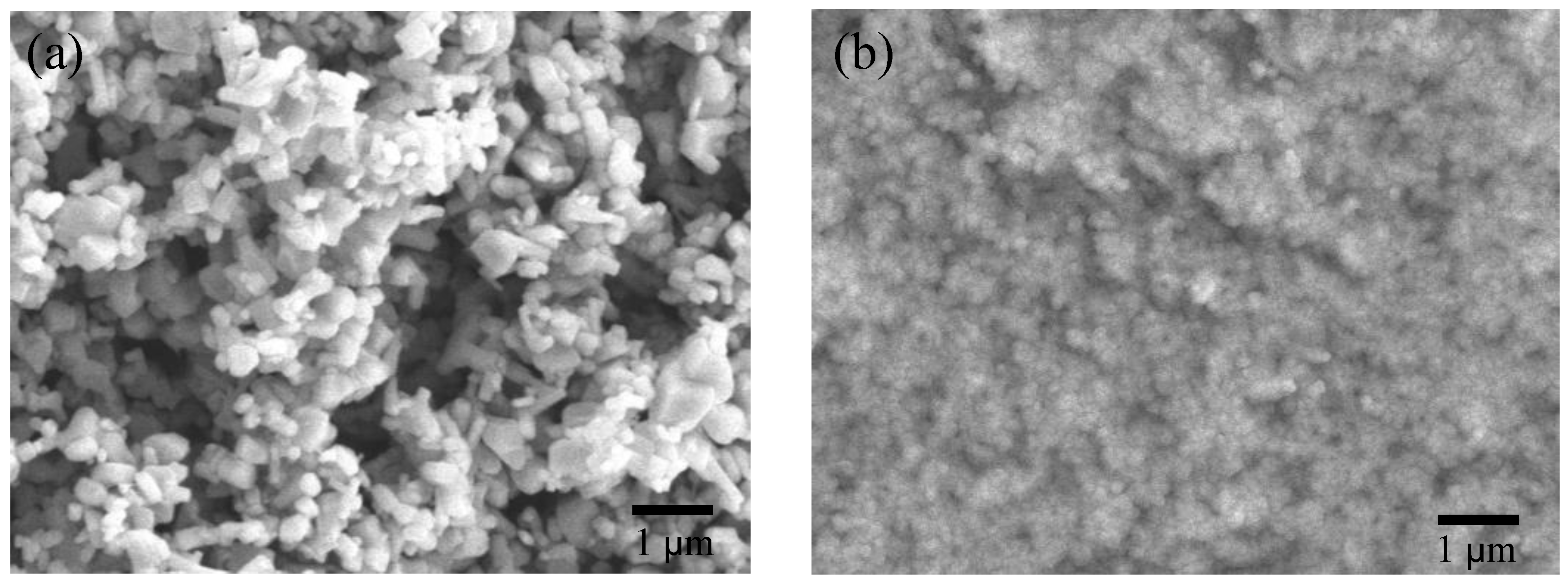
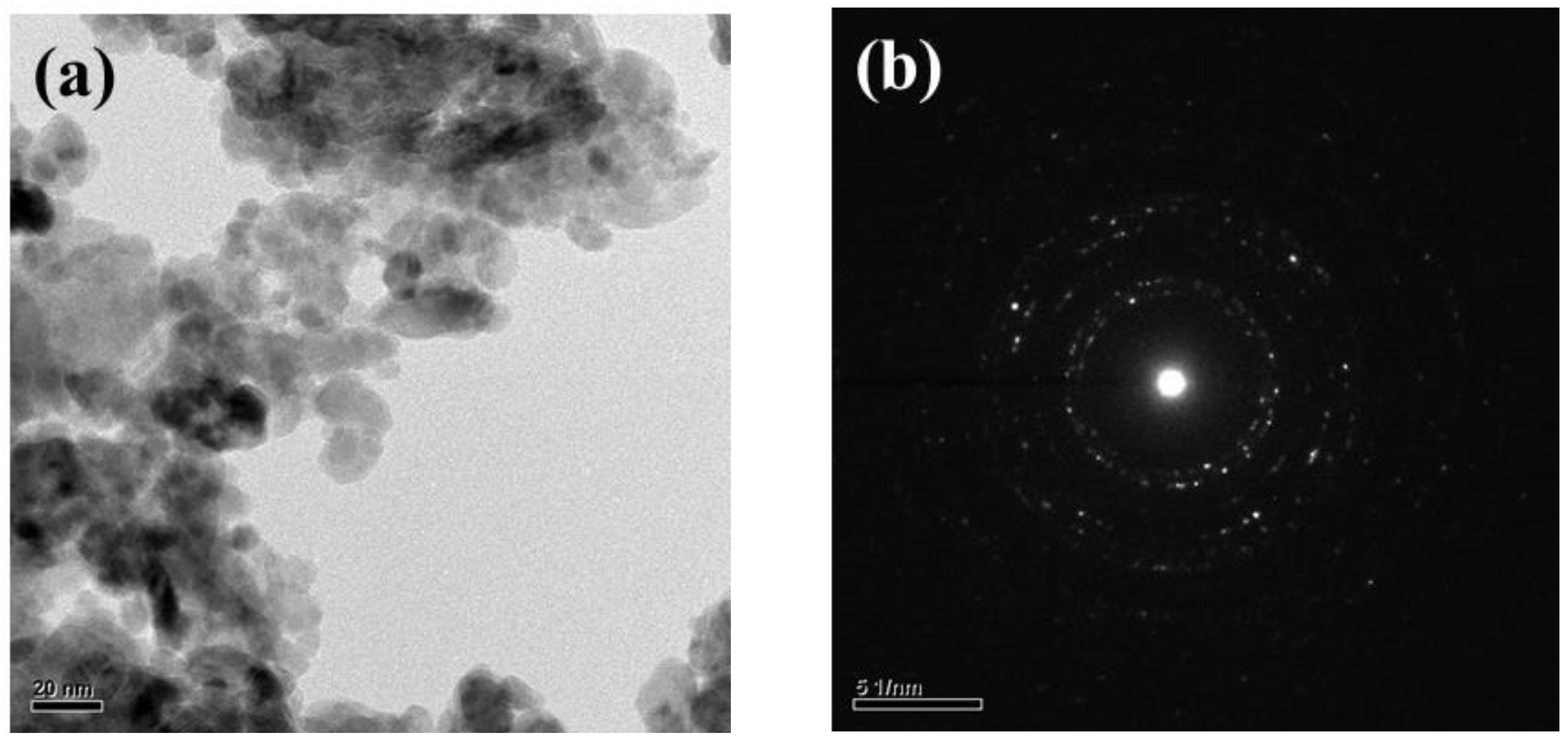
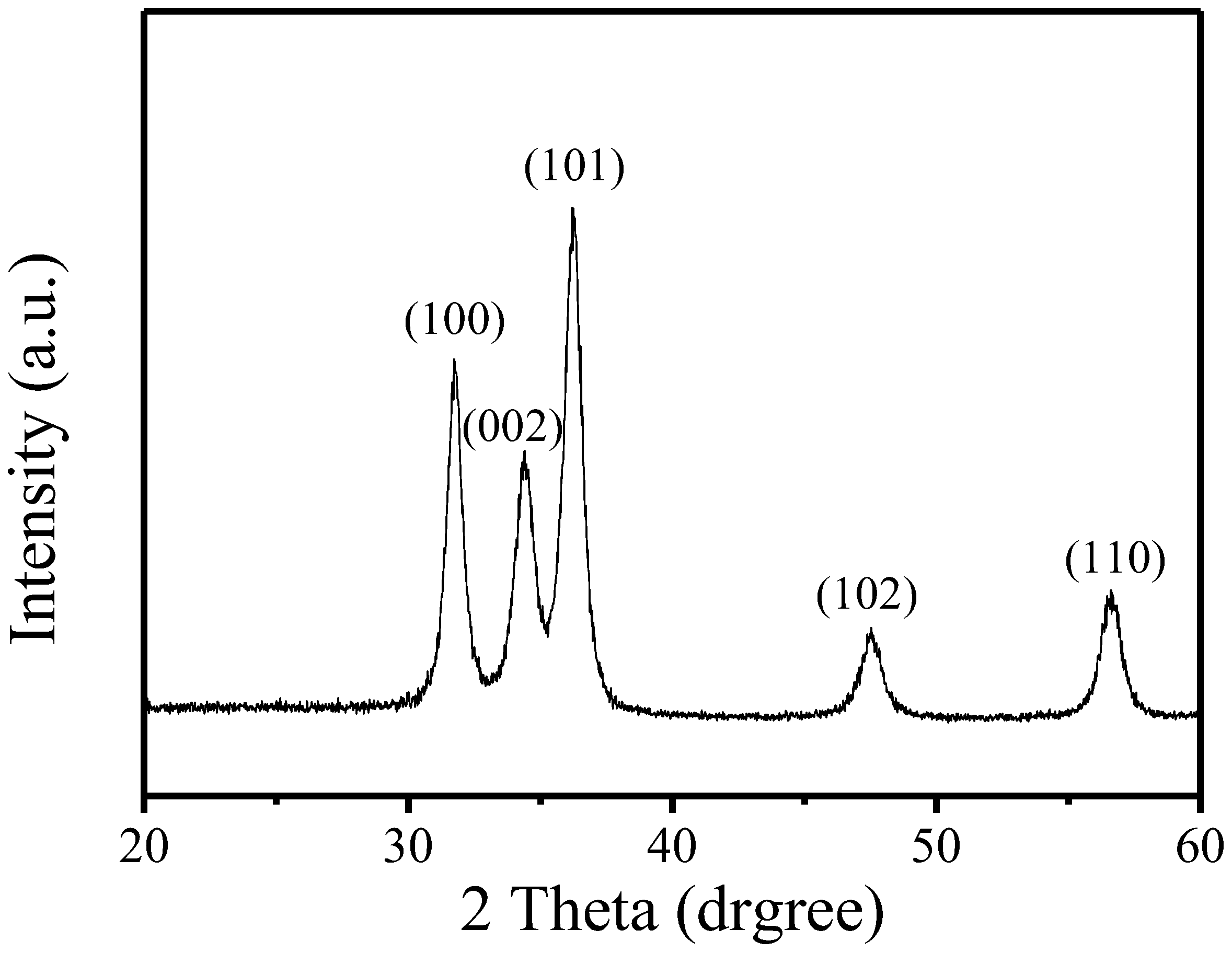
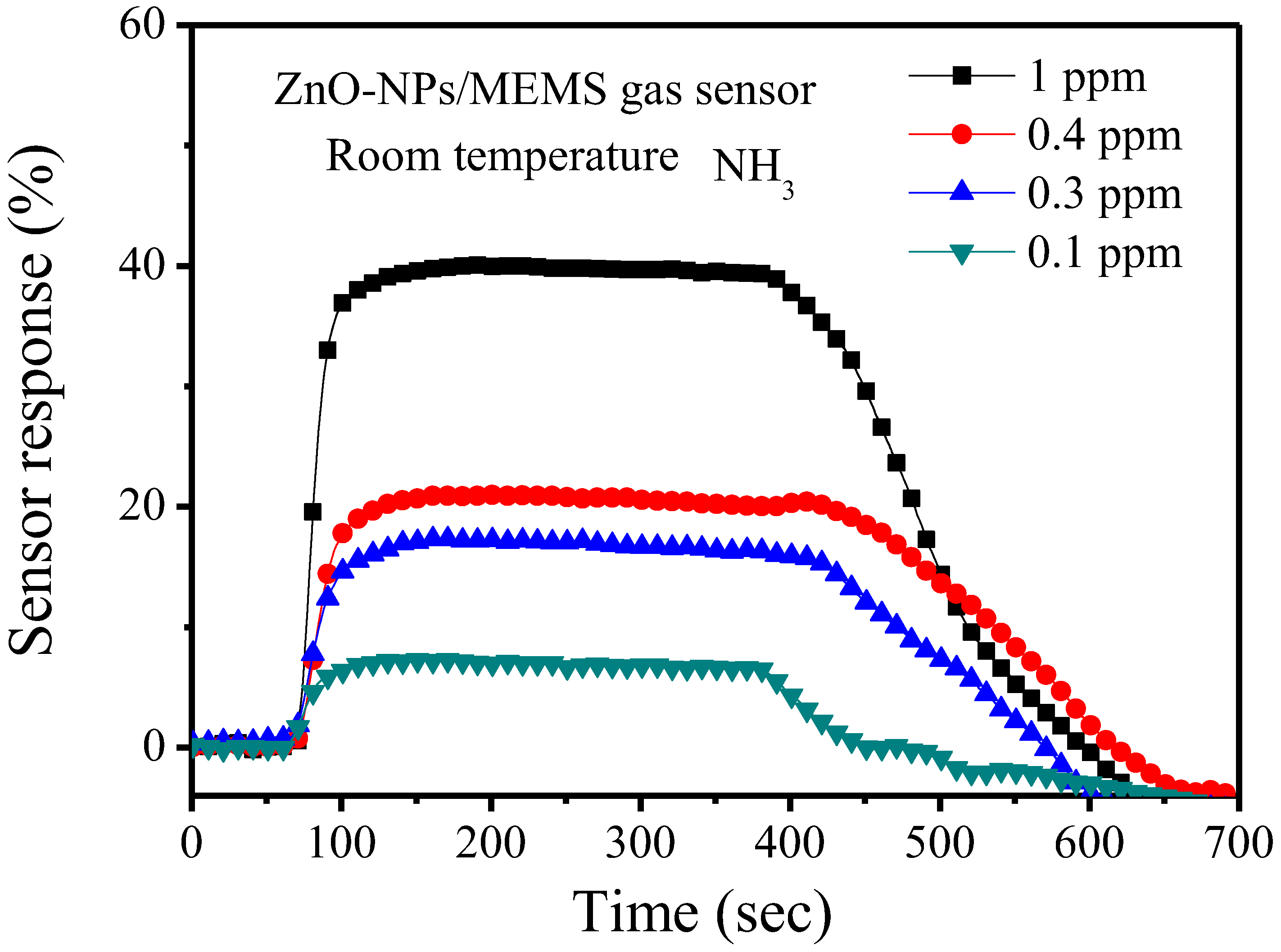
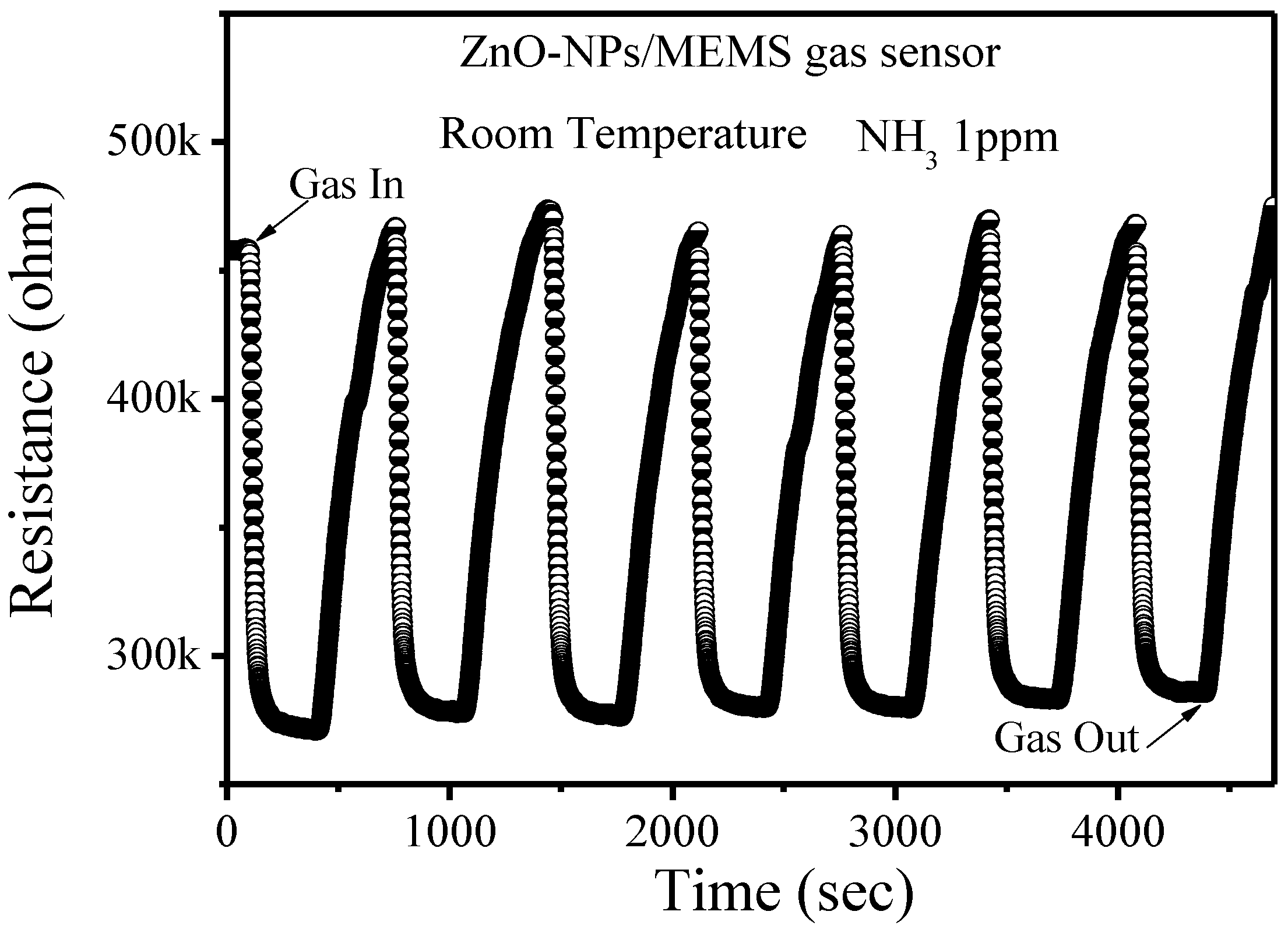
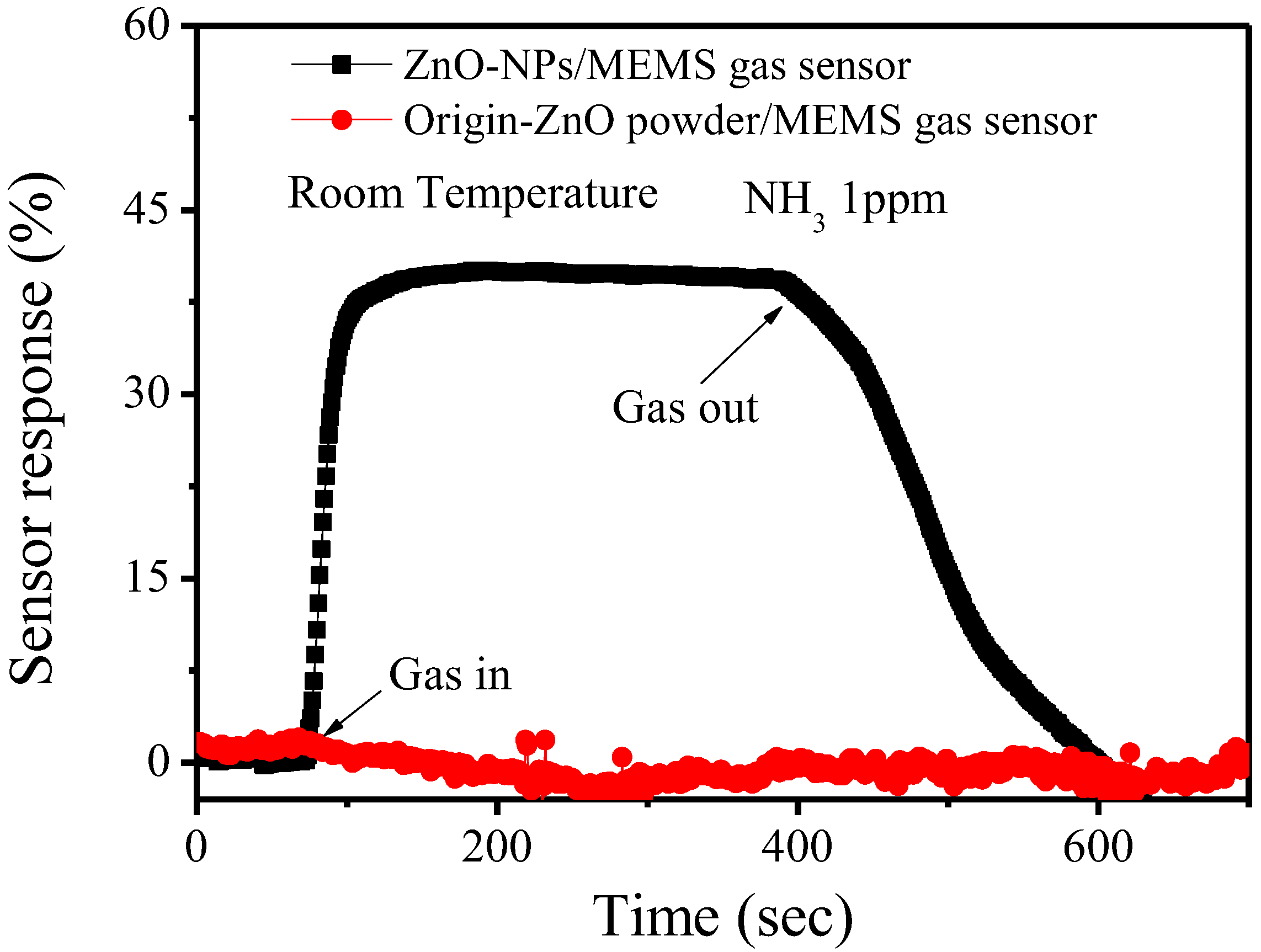
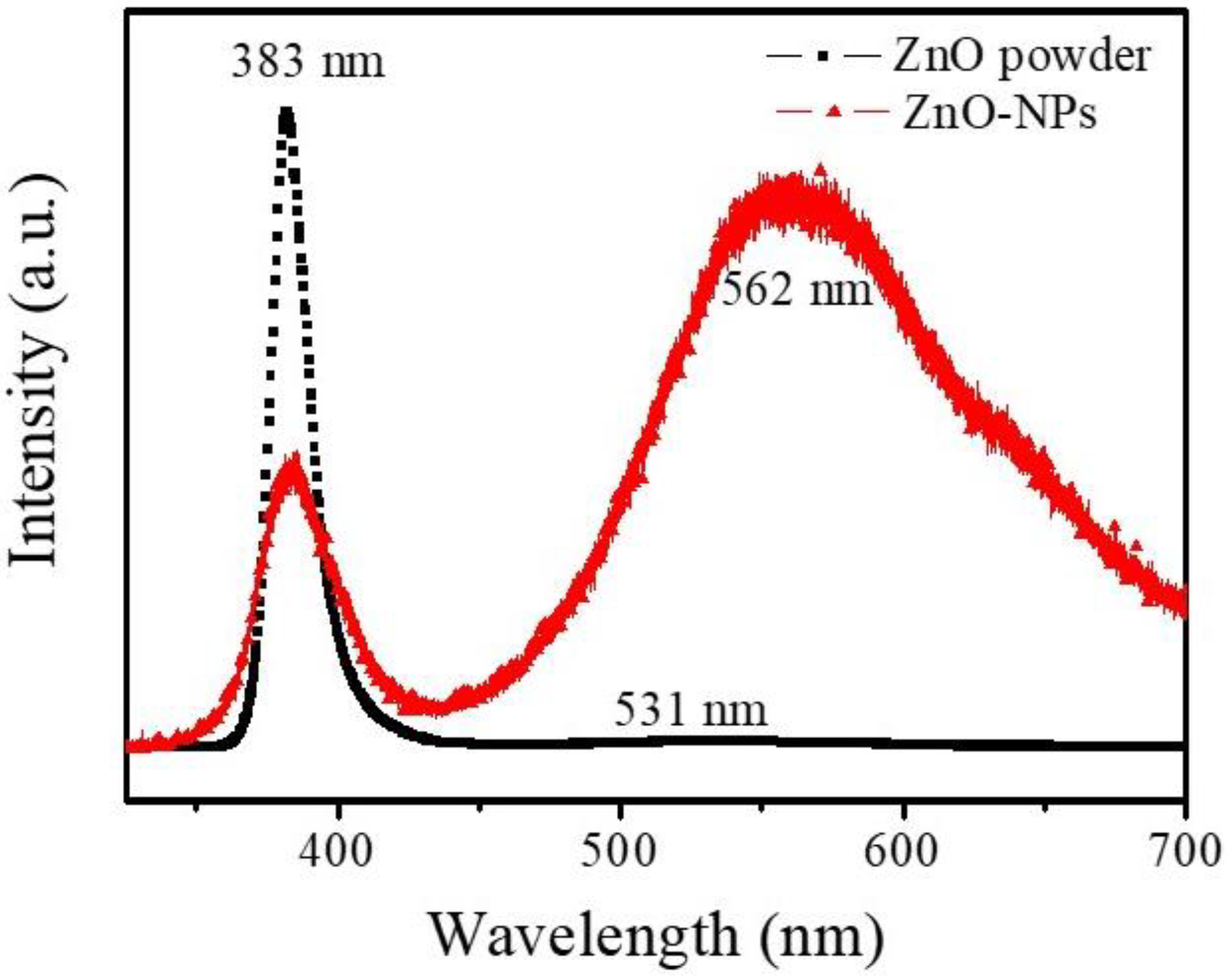
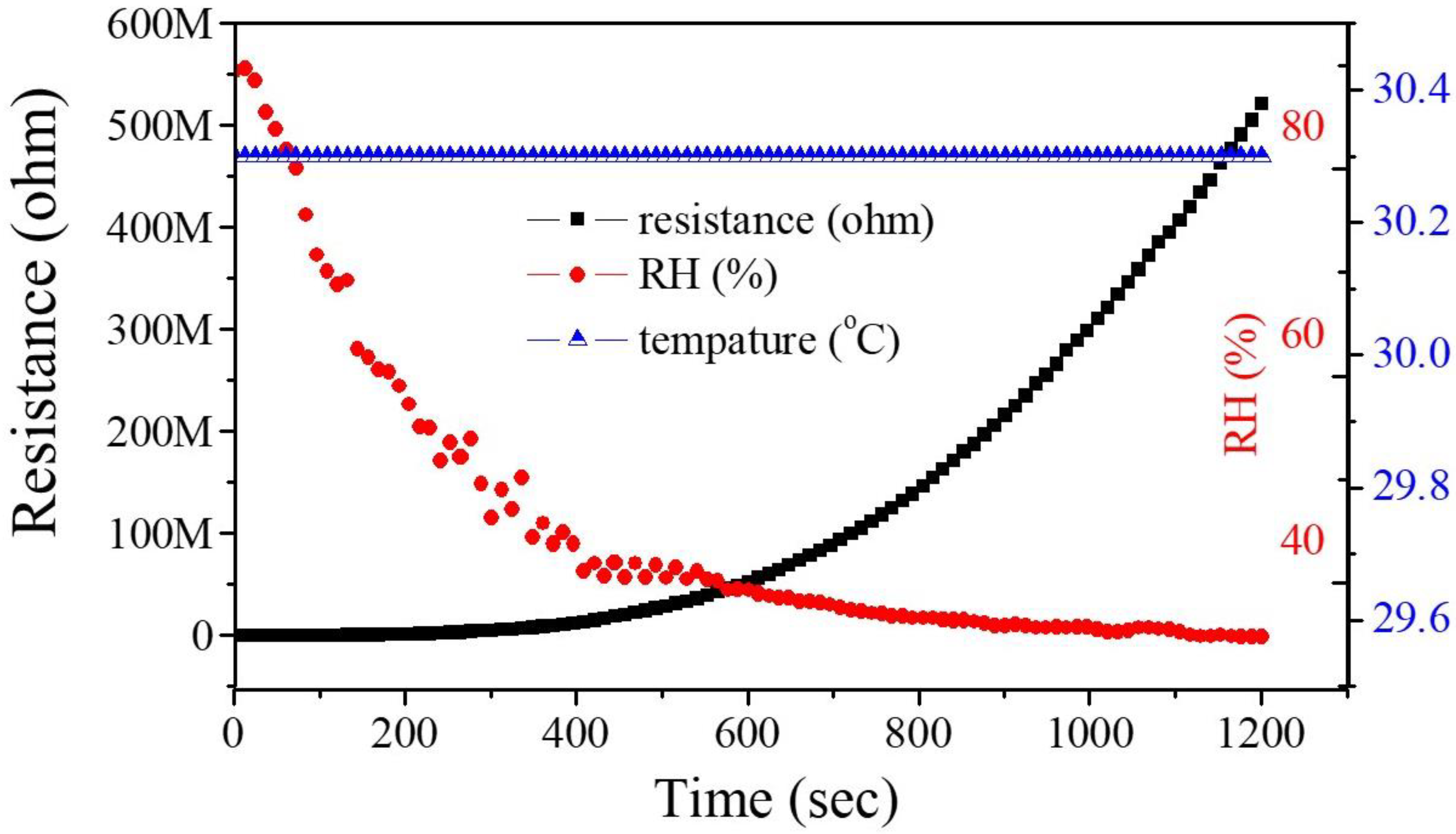

Publisher’s Note: MDPI stays neutral with regard to jurisdictional claims in published maps and institutional affiliations. |
© 2022 by the authors. Licensee MDPI, Basel, Switzerland. This article is an open access article distributed under the terms and conditions of the Creative Commons Attribution (CC BY) license (https://creativecommons.org/licenses/by/4.0/).
Share and Cite
Hsueh, T.-J.; Ding, R.-Y. A Room Temperature ZnO-NPs/MEMS Ammonia Gas Sensor. Nanomaterials 2022, 12, 3287. https://doi.org/10.3390/nano12193287
Hsueh T-J, Ding R-Y. A Room Temperature ZnO-NPs/MEMS Ammonia Gas Sensor. Nanomaterials. 2022; 12(19):3287. https://doi.org/10.3390/nano12193287
Chicago/Turabian StyleHsueh, Ting-Jen, and Ruei-Yan Ding. 2022. "A Room Temperature ZnO-NPs/MEMS Ammonia Gas Sensor" Nanomaterials 12, no. 19: 3287. https://doi.org/10.3390/nano12193287
APA StyleHsueh, T.-J., & Ding, R.-Y. (2022). A Room Temperature ZnO-NPs/MEMS Ammonia Gas Sensor. Nanomaterials, 12(19), 3287. https://doi.org/10.3390/nano12193287





